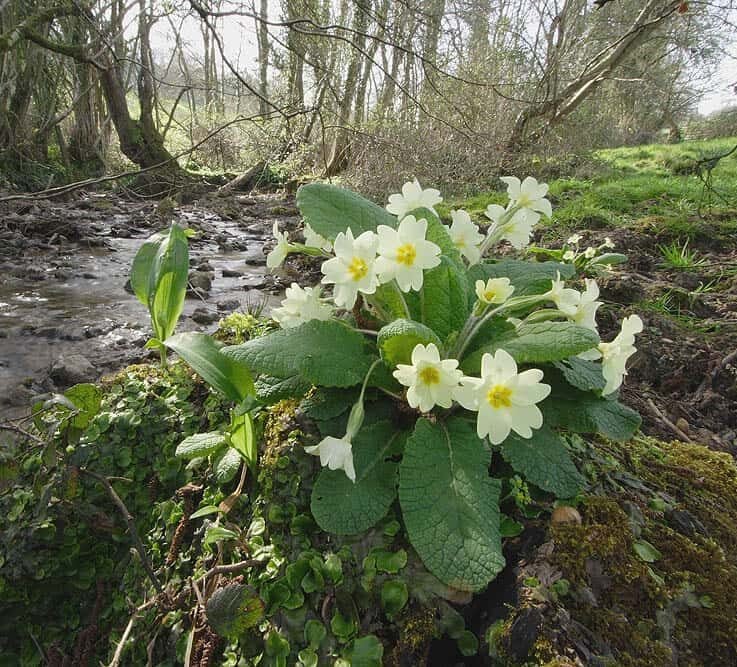Description
Primrose is one of our most familiar and attractive native wild flowers. A low carpeting perennial with pale yellow flowers and a deep yellow centre, it blooms from March to May with the occasional flower showing much earlier in the year.
Habitat Information
Primrose is a plant of cool, shaded locations and is found not only in woodlands, with which it is normally associated, but also hedgerows, north facing banks and mountain and coastal cliffs. It prefers dampish sites unusually on heavy clay soils.
Vegetative reproduction of wild Primroses can take place by the formation of lateral rosettes but it is a slow and rather limited process and reproduction through seed is far more important. Flowers are pollinated by bees, bumblebees and other long ‘tongued’ insects including syrphid flies and butterflies. One conspicuous pollinator is the bee fly Bombylius major. This furry and stout fly with long, spindly legs can often be seen hovering over Primroses on warm, still days, its long, rigid proboscis sucking nectar from the flowers rather like a hummingbird. Seed ripens in June and is dispersed by ants and rodents who are attracted by oils in the seed coat.
Growing Information
Primrose seed requires a period of chilling to break dormancy. It therefore needs to be sown in late summer or autumn. Germination will take place the following spring. On average the first flowers appear about twenty months after germination.


